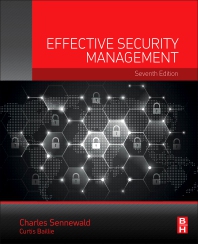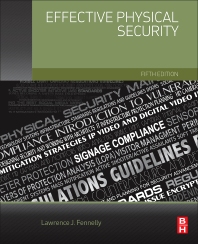
Using laptop computers and handhelds, law enforcement can grab and analyze myriad data even before getting to an incident site.

It can be of enormous significance to the future security of people and property and useful to enterprise security operations as well as law enforcement. The State of Louisiana and the City of Baton Rouge, working with NetTalon, Inc., conducted a series of comparative training exercises that culminated with a joint police and fire department demonstration of the technology.
Given that time is crucial in a security incident, the use of virtual command technology enabled police responders to reach the intrusion emergency with their incident planning and preparation in progress which enabled units to take action immediately upon arrival at the scene.

An officer views multimedia data to gain response insights.
PRESENCE BEFORE YOU ARE PRESENT
Virtual command technology provides security and police officers a virtual presence within an affected building. Within seconds of the alert they can understand a developing emergency and react to it as opposed to conventional response technology where many minutes may pass and the responders have no real information.In this concept of emergency management, a facility equipped with security sensors is integrated directly to a security command center and/or police department dispatch and operations centers. Every responding entity receives notification at once, eliminating time-consuming rerouting.
Emergency notification reaches the police responders directly, and in seconds they can view the inside of the building, virtually “looking at” the emergency. The alarm control panel in the building has a database containing all floor plans with icons representing sensors. In a security emergency, sensor conditions are updated every second by icons changing their color allowing monitoring personnel to track movement through the facility.
Video is integrated into the system where it’s critical to identify an intruder or validate the presence of a victim in a refuge room.
The inbound security patrols or police cruisers access information en-route, so they can see the incident and complete preliminary incident planning as they drive to the building. By the time they arrive at the building everyone has an assignment and incident mitigation begins immediately.
During the security exercises digital lines connected laptops to Baton Rouge District 2 personnel who provided tactical backup and to the 911 police dispatchers who took responsibility for validating the incident on receipt of the second alarm, dispatched responding units and obtained video descriptions of the intruders utilizing the high speed video links. In addition six mobile data computers were used by responding units. These included the incident commander and five responding units.

As some armed officers approach the scene, the virtual command center moves with them.
ALARMS, DATABASES AND IP VIDEO
Two days of police exercises focused on break-in, vandalism, theft and arson and used NetTalon’s alarm tracking technology coupled with integrated IP video for subject description. Using both wired and wireless monitoring stations located on and off site first responders viewed the developing emergency in real-time using virtual command technology. Each monitoring station displayed graphic information detailing the location of each security alarm, enabling responding officers to track an intrusion in real-time while obtaining the intruders identity using integrated IP video. In addition, two aggravated assault scenarios were evaluated during the exercises. Exercises performed using conventional alarm technologies enabled response statistics to the gathered for comparative analysis.Refuge rooms were established on each floor allowing victims to seek refuge in the case where they became trapped. Each refuge room was equipped with a life safety button alerting incident commanders that victims were trapped. Each refuge room contained a video camera allowing responding units to validate en-route occupancy of the refuge room. Finally each refuge marked by a Green Cross was equipped with a blue strobe light activated on pushing the life safety button.
Remarked Police Chief Jeff LeDuff, City of Baton Rouge, “We have a huge concern in law enforcement. Our number one priority based on the recent events in Virginia is the safety of our children. I can tell you now that the Baton Rouge Police Department has a very aggressive school crisis plan. We know what we are going to do if something occurs on one of our campuses. With this technology in a school our kids and communities will be much safer. This technology along with the plan we currently have in place will allow us to know where the person is, where the person has been and I can send my people. We can get to a scene and immediately if the program has changed by virtue of looking at what is going-on on the laptop and what my officers have in their hands we can change the whole strategic plan of that event. I think communities when this technology is available and in our communities’ law enforcement officers will have the upper hand.”
SIDEBAR 1: How Is Virtual Incident Command Different?
Today’s security officers or police departments often know little of an incident prior to arrival on the scene. They respond to an electronic alarm incident by dispatching an officer to investigate the situation. Only after a discovery of forced entry, for example, are units dispatched to an actual incident. Those officers must then enter the building not knowing if perpetrators are present, how many or if they left the premises. They are forced to make a room by room, floor by floor search. With a virtual incident command, an actual incident is verified in seconds and responding security and law enforcement officers can determine the point of entry, locate and track the intruders using the mobile computers. Video cameras can be used to obtain subject description of perpetrators.
A building’s doors can appear as icons within the virtual command center and can tie into a facility’s access control system, too.
SIDEBAR 2: Lesson Learned
Virtual command technology allows for:- Immediate ability to validate an actual incident.
- Immediate ability to dispatch adequate units to mitigate the incident.
- Excellent situational awareness, en-route units can locate and track perpetrators.
- Fast operational tempo with building exits quickly secured.
- Quick tactical control of the building by incident commander.
- Rapid mitigation of incident.
- Enhanced police officer safety.
- The facility is directly networked to security and police dispatch centers for immediate notification and visual validation of an emergency;
- The facility is networked to tactical monitoring stations for situational awareness backup of a developing security incident; and
- Each responding unit viewing the incident remotely utilizes a hardened notebook networked to the facility using commercial broadband wireless connectivity.
SIDEBAR 3: Public Alert, Mass Notification Make Noise
A Presidential Directive, a tragic incident at Virginia Tech University and myriad loss prevention mandates and liability issues have come together to spotlight the need for public alert and mass notification systems.Such systems complement security policies, procedures and electronics. Traditional security companies are acquiring niche firms in the mass notification arena or rolling out systems aimed at government and large corporate users.
Security Magazine Editor Bill Zalud got an earful of ADT Security Systems’ Clear Warning public alert warning system during a media event in south Florida in late April.
The product, a state-of-art outdoor public alerting system to provide essential warning and real-time information to people in endangered areas during emergency situations, already is at certain U.S. military installations. The product features what ADT calls “Clear Voice” centering on highly intelligible voice technology to deliver audio messages via live voice, recorded messages and/or siren tones throughout highly populated, wide geographic areas.
In another indication of the growing importance of emergency control tech, Cooper Industries, Ltd. just acquired MadahCom, a privately owned manufacturer of secure wireless emergency control and mass notification systems (MNS). MadahCom will become part of Cooper Wheelock’s notification systems business. “MadahCom’s capabilities in wireless technology deliver the industry-leading solution in the rapidly growing MNS market, where delivering the right message to the right people at the right time is paramount for evacuation and security. Coupled with our acquisition of Wheelock, Inc. in 2006 and our existing Cooper Menvier business, we now have a strong global platform in the fire and safety notification market,” said Chairman and CEO Kirk Hachigian.
MadahCom’s flagship products, WAVES (Wireless Audio Visual Emergency System) and TACWAVES (Tactical WAVES), a portable alerting system, are personnel and public warning systems and feature sophisticated command and control software to activate safety sirens, customized voice messages and visual alerts via secure networks.







